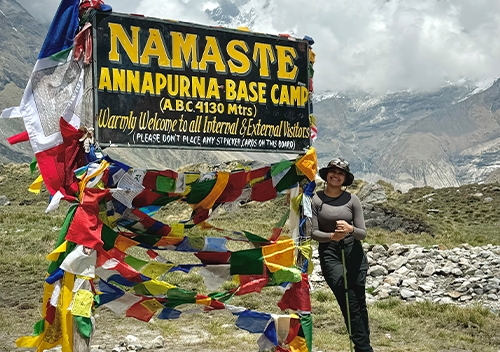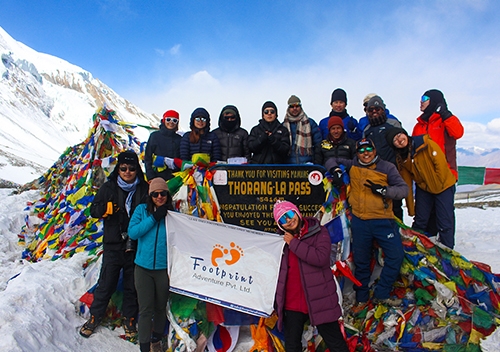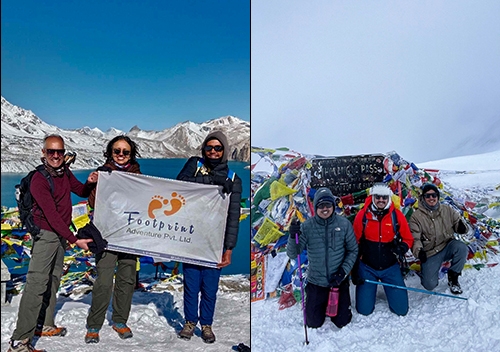The Annapurna Base Camp trek is within the majestic Himalayas in central Nepal. This trek explores stunning mountain views, diverse landscapes, and rich cultural experiences. You'll walk through dense forests, pass charming farms, and climb into alpine meadows, all with the backdrop of some of the tallest mountains in the world. The journey offers an incredible blend of natural beauty and adventure, making it a must for trekkers seeking both challenge and scenery.
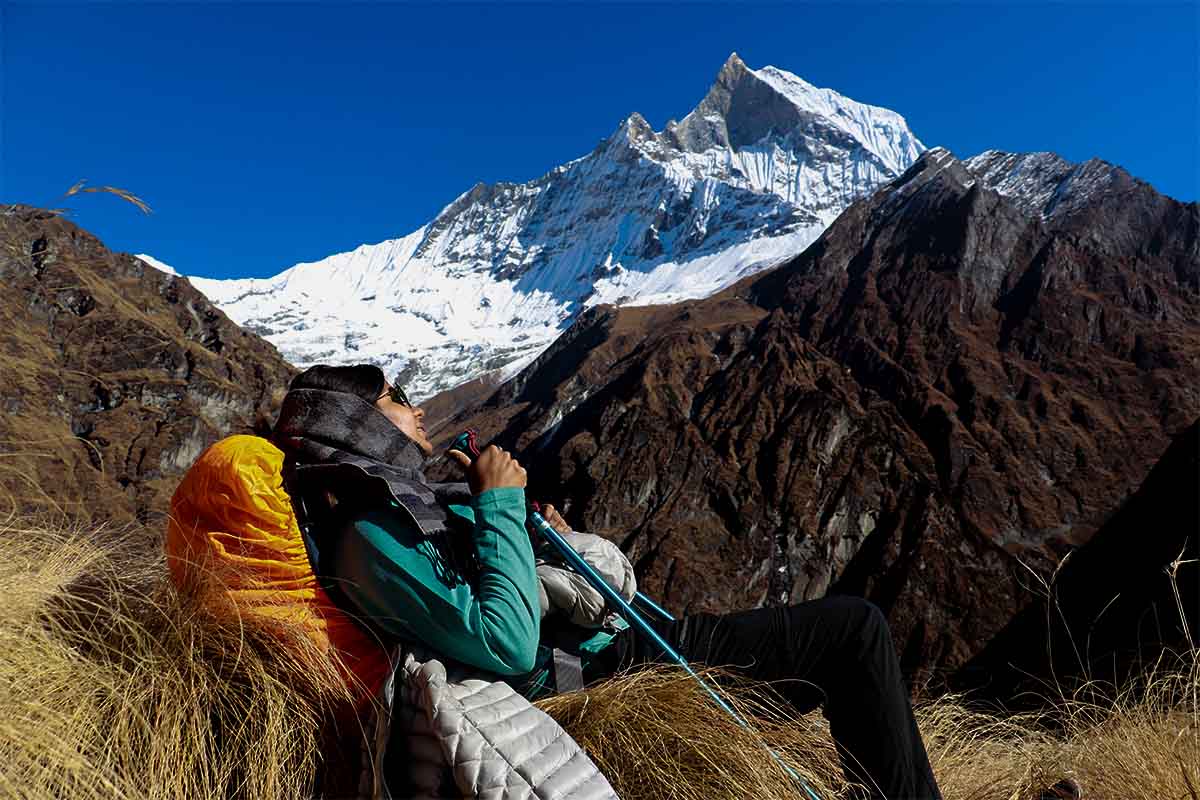
Trekking means more than just flying from one location to another; it involves an appreciation of the characteristics of a given region, such as an understanding of the Annapurna Base Camp trek cost andAnnapurna Base Camp weather by month.
Knowing critical factors like the best time for Annapurna Base Camp Trek, the trek's cost, and weather by month is essential for planning. Whether looking for a long or short itinerary, this guide covers everything for an unforgettable trip full of memories!
Why Trek to Annapurna Base Camp?
The Annapurna base camp trek is one of the most spectacular journeys, taking you through green valleys, attractive hamlets, and magnificent mountains. Nestled in the Annapurna Region and theAnnapurna Conservation Area, this trek takes you to the Base Camp at 4,130 meters (13,550 feet), encircled by the giants Annapurna I, Machapuchare, and Hiunchuli.
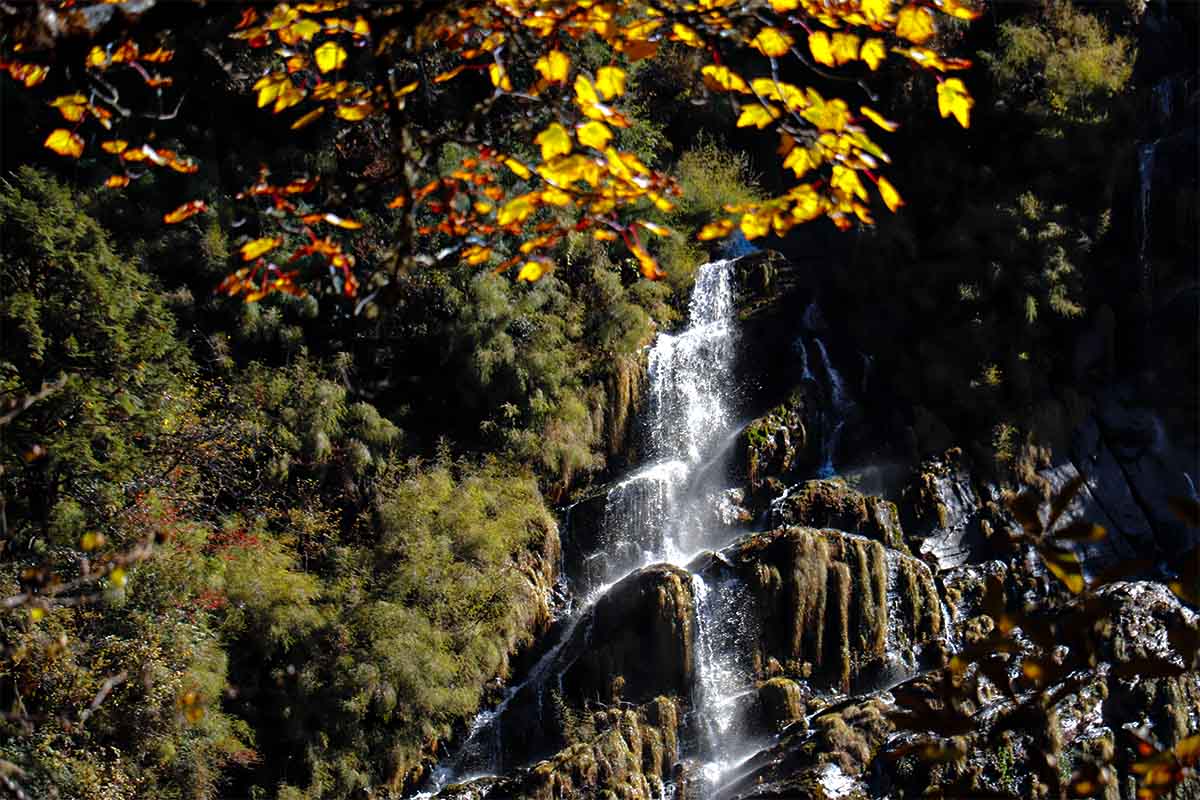
Annapurna Base Camp (ABC) Trek is generally considered moderate compared to Everest Base Camp Trek, which has well-defined trails and less elevation gain, making it suitable for trekkers with essential fitness. While the focus may be on reaching the Annapurna Base Camp, the journey offers much more. From stunning landscapes to rich cultural interactions, this trek is an unforgettable experience filled with adventure and serenity.
Here are five strong reasons to embark on this incredible trek:
Breathtaking Views
Soak in spectacular landscapes and panoramic views of Annapurna I, Machhapuchhare, and other famed peaks. The stunning scenery, with its vast open skies and towering hills, is ideal for your trekking adventure, making it a dream come true for every photo enthusiast. To fully appreciate these views, plan your trek during the best time for Annapurna Base Camp Trek to experience the best weather and visibility.
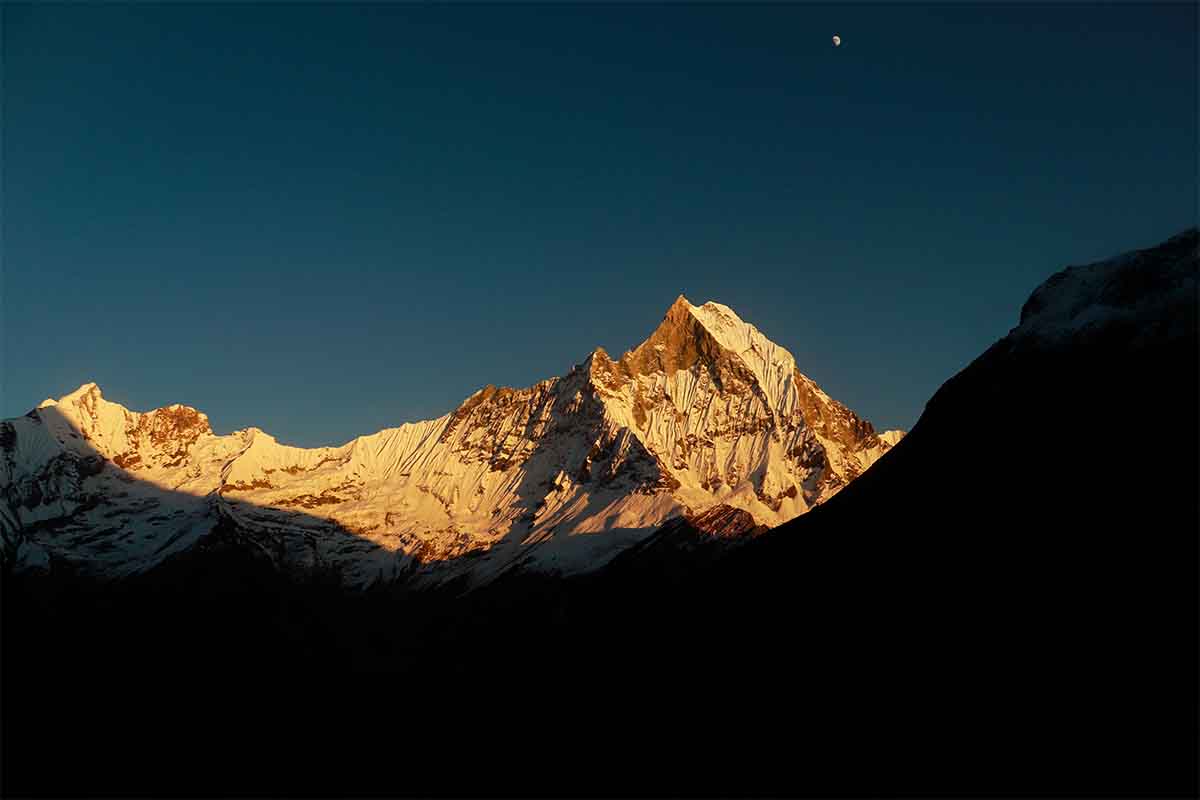
Cultural Encounters
Communicate with the locals, the Gurungs, and the Magars, and enjoy their beautiful and hospitable culture. This helps hugely, as most people one meets in engaging work along the trail represent curious and hospitable people.
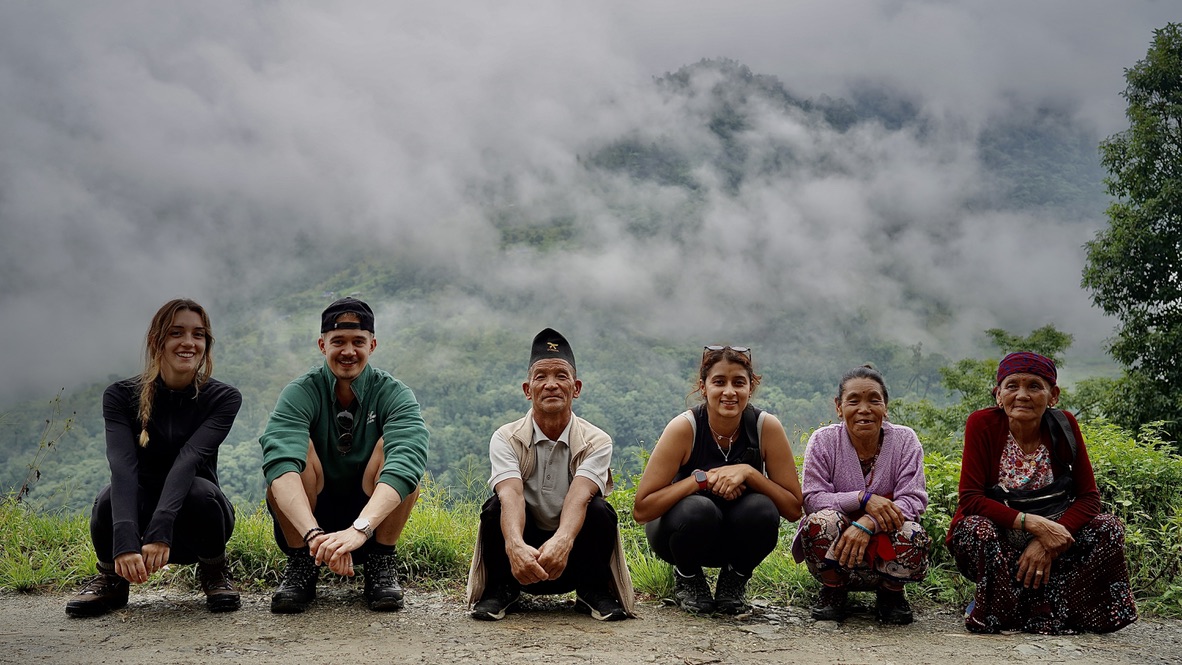
Diverse Terrain
While hiking, you will pass through several climatic regions, ranging from hot, humid jungles to spectacular high-altitude meadows. This varied landscape guarantees that every day of the trek is full of pleasing sights and new and different terrain, which makes the journey all the more enjoyable.

Physical Challenge
The trek posed a challenge that trekkers could accomplish regardless of their experience level. The physical and psychological motivation one gets when crossing different degrees of altitude and types of terrain that lead to elevations as high as Annapurna Base Camp is immeasurable.
Also read our blog, How to prepare for Annapurna Base Camp Trek.
Connection with Nature
Feel the extreme contrast between the regular life supplanting oneself and going to the very heart of the Himalayas. The peaceful surroundings, clean environment, and picturesque scenery provide an atmosphere that refreshes the mind and the body.

Why Annapurna Base Camp is a Must-Do Trek in Nepal
The Annapurna Base Camp (ABC) trek is one of Nepal's most iconic adventures, attracting trekkers from around the world. Nestled in the heart of the Annapurna region, this trek offers breathtaking views of towering Annapurna mountain peaks, including Annapurna I (8,091m), Machapuchare (6,993m), and Hiunchuli (6,441m). The ABC trek provides a unique blend of natural beauty, diverse landscapes, and rich cultural experiences.
Travellers walk through pleasant subtropical forests before reaching rhododendron forests and terraced rice fields, then hike through mountain pastures before finding themselves in front of an iconic high-mountain amphitheatre with snow-topped peaks. The trek's attraction grows stronger due to local resident hospitality which lets visitors experience traditional Gurung and Magar settlements.
Understanding the Weather and Temperature
During trekking, the climatic conditions and ambient temperature are paramount throughout the Annapurna Base Camp Trek. Knowledge of the seasonal climate changes will go a long way toward adequately preparing for the trip and maximizing its benefits.
Below is a summary of the monthly weather changes and the best time for Annapurna Base Camp Trek.
January to February:
The winter season brings the lowest temperatures along the trek. During the day, expect temperatures of 5°C to 10°C (41°F to 50°F), and at night, if you are above sea level, expect temperatures ranging from 0°C (32°F) to -5°C (23°F) in higher altitudes. Furthermore, snowfall may be expected, as it usually occurs in January, rendering the route slippery and challenging. The number of people traveling during this period is relatively small; however, the conditions are extreme.
Hence, proper clothing and skills for winter trekking are a must. This time may also be an adventure for those who love to trek in spectacular white-snow winters when there are not many people around, but be ready for the exploration.
March to May:
Spring in the Annapurna region is arguably the best time for Annapurna Base Camp Trek. With the warming conditions, more trails become workable as the snow coyly recedes. The range of temperatures is ideal for trekking since, within this season, the average is between 10 and 20°C (50 and 68°F) during the day. Forests of rhododendrons bloom to color the surroundings, and the crisp air pleases the lungs.
Hence, this allows for some suitable treks, but remember that this is the high season for most trekkers, so expect many more people on the trails. The climate is fair on most occasions, but come prepared in case of unexpected downpours, particularly as this period nears the month of May.
June to August:
The monsoon season arrives in the Annapurna Sanctuary between June and August, accompanied by torrential clouds that make trekking dangerous. These months expect lower elevation temperatures of between 15 °C and 25 °C (59°F and 77°F), but it can get lower in altitude, especially at Annapurna Base Camp. Temperatures during the day will range from 5°C to 10°C (41°F to 50°F); at night, the range tends to go almost 0 degrees.
However, some trekkers seeking adventure may still go out; most of the time, these months should be avoided due to pending visibility and safety issues. The more verdant and refreshed terrain may be excellent, but the time is usually a risk versus benefit evaluation that favors only a few benefits.
September to October:
This is the season when the weather settles and becomes favorable, with blue skies and average warmth. September experiences a decline in rainfall, and by October, one should be prepared for temperatures that range between 15°C and 20°C during the day. That’s the most conducive period for mountain sightseeing, especially the peaks of Annapurna I and Machapuchare. It’s one of the best time for Annapurna Base Camp Trek, providing excellent conditions for trekkers to enjoy the majestic scenery.
This contributed to the fact that it is an active trekking season, which means one must book accommodation and permits early enough to guarantee their place.
November:
As things get more relaxed, the temperature at Annapurna Base Camp in November ranges from 10 to 15 °C (50 to 59 °F), while the nights can get hot and close to freezing. This month is still perfect for hiking since the weather is clear with beautiful mountain views, and only a few people are on the trails compared to the previous autumn months.
Properly preparing for colder nights and ensuring warm, comfortable insulation layers are also critical.
An excellent alternative is the Annapurna Circuit Trek, which encircles the Annapurna massif and includes crossing the Thorong La Pass at 5,416 meters (17,769 feet). Over 15 to 20 days, the trek showcases diverse landscapes and rich local culture.
Weather Guide for Annapurna Base Camp Trek
Understanding the weather in Annapurna Base Camp, Nepal, is crucial for planning a successful trek. The region experiences four distinct seasons:
- Spring (March-May): Mild temperatures (10°C to 20°C) with blooming rhododendrons. Ideal for trekking.
- Summer/Monsoon (June-August): Heavy rainfall causes slippery trails and landslides. It's not ideal, but it offers lush greenery.
- Autumn (September-November): Clear skies, stable weather, and crisp mountain views. The most popular season.
- Winter (December-February): Cold temperatures, snow-covered trails, and potential route closures due to heavy snowfall.
Always check local forecasts before trekking, as mountain weather can change rapidly.
Best Time for Annapurna Base Camp for Trek
The best time for Annapurna Base Camp trek is spring (March-May) and autumn (September-November). Each season has its own merits.
Spring Season (March to May)
Milder Weather:
This season is characterized by hot temperatures, which are friendly to trekkers. The average daytime temperature is generally within the ranges of 10 °C to20 °C (50 °F to 68 °F); hence, trekkers can move around without being inconvenienced by excessive heat.
However, temperatures tend to drop at night, with lows of 5°C (41°F) and, at times, even going lower, particularly in the higher elevations.
Blooming Rhododendrons:
The most fascinating part about the spring trek is the rhododendrons blooming. When you reach the lower valleys and continue up, you will see beautiful views covered with shades of pink, red, and white flowers.
These flowers adorn the pathways and invite butterflies and birds, which adds to the beauty of the trek.
Fewer Crowds:
However, there are fewer trekkers during spring than in autumn. This means you are more likely to use trekking for its primary aim and focus on nature without much disturbance. The less busy trails also enable one to engage more with the people and enjoy their cultures more.
Winter is excellent for trekkers who like to travel without seeing many people and for sitting silently and admiring the picturesque views.
Wildlife Sightings:
The season of spring is the savior of wildlife lovers. Warm weather means that most animals will be active. Most animals will come out of hibernation, enabling more accessible viewing of different species in their natural environment. This period will appeal to birdwatchers, as most birds will have returned to the area after migration.
As you hike the many environments in the Annapurna region, look out for cheeky monkeys, exotic birds, or even the rare Himalayan tahr.
Autumn Season (September to November)
Calm Weather:
The wind conditions in autumn are suitable for trekking due to their steadiness and reliability. October experiences mean daily temperatures of around 10°—15°C (50°—59°F), which is good enough to encourage trekking activity. However, the nights could be colder, so trekkers have to be equipped with enough wear to keep warm.
The weather is quite favorable. In addition to the warm temperatures, there are no clouds, making it possible to enjoy views of the Annapurna range.
Stunning Scenery:
This season is also known as the peak trekking season. High, clear skies allow trekkers to have a full view of the Annapurna range, which consists of Annapurna 1 and Machapuchare. It is such a perfect season for landscape lovers because the views of the snow-capped peaks that contrast with the blue skies are just out of this world.
With every such point in the trail, one can capture different angles of the mighty snow-bearing mountain ranges, making it a dream for every photographer.
Holidays and Events:
Besides the breathtaking scenery, trekking in October includes important local festivals such as Dashain and Tihar. Engaging in these celebrations is also advantageous for the trekkers since it allows them to behold the traditional practices, cuisines, and people.
Engaging with local people and their culture dramatically enhances your trekking experience in Nepal. It’s not just about the stunning natural beauty; you also get to appreciate Nepal's rich traditions and the warmth of its people. This cultural immersion makes trekking in Nepal a unique and fulfilling adventure, allowing you to create lasting memories while exploring the breathtaking landscapes.
Annapurna Trail: Scenic Routes & Challenges
The Annapurna trail offers multiple routes with varying levels of difficulty and scenic beauty. The classic trail starts from Nayapul, leading through Ghorepani and Poon Hill—famous for its stunning sunrise views over the Himalayas. Trekkers can choose alternative routes via Jhinu Danda, known for its natural hot springs, or the challenging Modi Khola valley.
Challenges:
- Steep ascents and descents, especially the stone staircases at Ulleri.
- High altitudes reaching up to 4,147 meters require acclimatization.
- Varying weather conditions, including sudden temperature drops.
The successful encounter of these obstacles demands proper preparation together with physical readiness and suitable gear.
Best Season For Trekking:
Moreover, autumn is a season with suitable climatic conditions and beautiful views; most people trek around Annapurna during this time. Certain sections of the trails may become quite busy, especially in well-known regions, making it very important to secure the services of accommodation and guides in advance.
For those new to trekking, securing a beginner's guide to Annapurna Base Camp Trek is highly recommended to ensure you are well-prepared and have an enjoyable experience amidst the busier trails.
Also, having preferences in types of accommodation or guides makes it better to book the trip well in advance. This ‘fever’ of trekking allows you to easily fit in more when traveling during this period, as you don’t have to trek alone.
Recommended Read: Reasons to trek Annapurna Base Camp trek
Things to Know Before Trekking to Annapurna Base Camp
An Annapurna Base Camp (ABC) trek serves as a once-in-a-lifetime journey which presents natural masterpieces together with cultural immersion and physical accomplishment. Several necessary preparations need to be considered before starting the trail because they affect your safety and enjoyment while respecting local people during your trek.
1. Permits: What You Need and Where to Get Them
To trek in the Annapurna region, you'll need two essential permits:
- TIMS Card (Trekkers' Information Management System): This card helps authorities track trekkers in case of emergencies and costs around $20 USD.
- Annapurna Conservation Area Permit (ACAP): This permit supports the conservation efforts within the region and costs $25 USD.
The two travel permits are readily available for purchase at Kathmandu and Pokhara. Today requires both passport pictures and your passport for successful verification. The mountain permits should accompany you throughout your trek because numerous checkpoints exist along the route.
2. Acclimatization: Staying Safe at High Altitudes
Altitude sickness can be a genuine concern as you ascend towards the base camp, which sits at 4,130 meters (13,550 feet). To prevent Acute Mountain Sickness (AMS):
- Ascend gradually: Avoid climbing more than 500 meters (1,640 feet) per day once you're above 2,500 meters.
- Stay hydrated: Drink plenty of water, but avoid alcohol and caffeine, which can dehydrate you.
- Listen to your body: If you experience symptoms like headaches, nausea, or dizziness, it's best to rest or even descend to a lower altitude.
3. Packing Essentials: What to Bring on the Trek
Packing smart can make or break your trekking experience. The weather in the Annapurna region can be unpredictable, so it's best to be prepared for all conditions:
- Layered Clothing: Weather can change rapidly, from hot sunny days to chilly nights. Wear moisture-wicking base layers, insulating mid-layers, and a waterproof outer shell.
- Sturdy Trekking Boots: Invest in well-fitting, waterproof boots with good ankle support.
- Sleeping Bag: While teahouses provide blankets, bringing your own sleeping bag rated for -10°C (14°F) ensures warmth during cold nights.
- First Aid Kit: Include essentials like band-aids, antiseptic wipes, painkillers, and altitude sickness medication.
- Water Purification Tablets or Filter: Water Purification Tablets or Filter serve as vital equipment since the water from taps remains unsafe for consumption. For more detailed view, click here.
4. Local Etiquette: Respecting Culture and Traditions
The Annapurna region trekking experience provides its visitors with scenic landscapes but also enables encounters with local residents who create an integral part of the journey. The effort to show respect and understanding of local customs helps your local connection.
- Greet with "Namaste": Press your palms together and say "Namaste" when meeting locals—it's a warm, respectful gesture.
- Ask Before Photographing: Always request permission before taking photos of people, especially in rural areas where privacy is valued.
- Dress Modestly: Even though you're trekking, try to wear clothing that covers your shoulders and knees, especially when visiting villages or religious sites.
How Much Does the Annapurna Base Camp Trek Cost?
The trekking prices for Annapurna Base Camp stretch between numerous options based mainly on individual choices and trek length as well as whether people choose guided or independent tours. The expenditure for Annapurna Base Camp trekking varies based on your budget choices as outlined below:
[H3] 1. Permits
- TIMS Card: $20 USD
- ACAP: $25 USD
These are non-negotiable and must be factored into your budget.
2. Accommodation & Meals
Most trekkers stay in teahouses, which are simple lodges along the route that provide meals and a bed:
- Teahouse Accommodation: $5-$10 USD per night (often cheaper if you eat at the same place).
- Meals: Around $5-$10 USD per meal. A typical day's food (breakfast, lunch, and dinner) will cost around $20-$30 USD.
3. Guides and Porters
Utilizing local tour guides together with local porters provides two essential benefits: economic support to the community and better understanding of the trekking experience.
- Guides: $25-$30 USD per day. Operating under their guidance enables travelers to gain vital information concerning local history and tradition as well as weather conditions.
- Porters: $20-$25 USD per day. The weight limit of porters stands at 20-25 kg allowing travelers to reduce their backpack weight when trekking.
4. Transportation
The trailhead can usually be reached by traveling from Pokhara to Nayapul which serves as the primary starting point.
- Local Bus: $5-$10 USD, budget-friendly but less comfortable.
- Private Jeep: $80-$100 USD, faster and more comfortable, especially for groups.
5. Total Estimated Cost
For a 7-10 day trek, the total cost typically ranges between $500-$800 USD (excluding international flights). This includes permits, accommodation, meals, guide/porter fees, and transportation.
Permits & Regulations for Trekking in the Annapurna Region
Trekking in the Annapurna region isn't just about following the trail—it's also about respecting the rules that protect both trekkers and the environment. Here's what you need to know:
1. Required Permits
- TIMS Card (Trekkers’ Information Management System): $20 USD
- Annapurna Conservation Area Permit (ACAP): $25 USD
Both permits can be purchased at the Nepal Tourism Board offices in Kathmandu or Pokhara. Remember to bring two passport-sized photos and your passport for verification.
2. Environmental Regulations
- Leave No Trace: Carry your trash with you and dispose of it properly in designated areas.
- Respect Wildlife: Avoid feeding animals or disturbing natural habitats.
- Stay on Marked Trails: This protects fragile ecosystems and ensures your safety.
Annapurna Base Camp in Different Seasons
Travelers experience different wonders while trekking to Annapurna Base Camp based on the seasonal changes. Throughout the year visitors can expect several different experiences at the Annapurna Base Camp.
1. Spring (March-May)
- Weather: Pleasantly warm days and cool nights.
- Highlights: Rhododendrons are in full bloom, and there are lush green landscapes and clear mountain views.
- Crowds: Moderate; it's a popular time but less crowded than autumn.
2. Summer/Monsoon (June-August)
- Weather: Heavy monsoon rains with hot, humid conditions.
- Highlights: Vibrant, green landscapes and fewer crowds, but be prepared for leeches and muddy trails.
- Drawbacks: The trek becomes difficult because of slippery pathways while landslides occur regularly during this area.
3. Autumn (September-November)
- Weather: The weather shines with transparent skies which follow days of pleasant temperatures and evenings of refreshing cold.
- Highlights: During this period you can enjoy optimal weather conditions together with excellent mountain perspectives.
- Crowds: High; book accommodations in advance.
4. Winter (December-February)
- Weather: Cold temperatures with snow-covered trails.
- Highlights: Serene, quiet trails and stunning snowy landscapes.
- Drawbacks: Some teahouses may close, and higher passes could be inaccessible due to snow.
Trekking in Nepal During Festivals: Best Cultural Experiences
Trekking in Nepal isn't just about natural beauty—it's also a chance to experience rich cultural traditions. If you time your trek during local festivals, you'll gain deeper insight into Nepalese culture.
1. Dashain (September/October)
Nepal commemorates its biggest cultural celebration, Dashain, which celebrates goodness triumphing over wickedness. During this auspicious period, the villages become more lively through decorative displays, as people sacrifice animals while celebrating family time. Local customs are prominent during this auspicious period, alongside the continuous celebration of holiday spirit.
2. Tihar (October/November)
Sheep, cows, and family relations are honoured at Tihar, which Nepalis call the Festival of Lights. Every house becomes a scene of illumination through oil lamps, while colourful rangoli art adorns the walls. The seven days of this festival feature unique observances that honour dogs, cows, and domestic crows.
3. Holi (March)
Spring welcomes itself with the colourful celebration that Holi brings to Nepal. Groups of both locals and tourists join in celebratory dancing as people from all walks of life spread bright-coloured pigments over each other. The atmosphere in Nepal during this period becomes lively and cheerful for everyone who visits.
You will treasure your experience of traversing Annapurna Base Camp because it offers unforgettable views of majestic peaks as well as cultural interests and physical obstacles. A carefully planned and receptive mindset will lead you into an enduring trekking experience.
Preparing for Your Trek
An adequate packing list for the Annapurna Base Camp is crucial. This means knowing what equipment is necessary and what health and safety measures are in place to allow one to have an enjoyable stay, though the mountains can be very challenging.
Though the trek offers stunning views, the hills can be challenging, so having a reliable Annapurna Base Camp Trek guide is essential to navigating the terrain and making the most of your adventure.
Essential Gear
- Moisture-wicking base layers: To maintain comfort, moisture from the body should be transferred away from the skin. Lightweight materials can incorporate this into trekking.
- Insulating mid-layers: Warm fleece or down jackets are essential for insuring against cold conditions, mainly at high altitudes.
- Waterproof outer layers: Good-quality jackets and pants prevent rain and wind, helping one remain dry and comfortable.
- Sturdy trekking boots: To protect your feet and help you balance on rough surfaces, it is wise to wear non-blistering, well-fitted, and waterproof trekking boots.
- Comfortable Backpack (40-60 Liters): A backpack rugged enough to hold all the necessary items and provide a good weight distribution for easy carrying should also be selected.
- Reusable Water Bottle or Hydration System: Staying hydrated is essential, so carry a water bottle or a hydration bladder for easy sipping on the move.
- Trekking Poles: These help to provide extra stability and support, thus preventing excessive stress on the knees during long descents and in rough terrain.
Health and Safety Tips
- Make it a point to constantly hydrate, especially since increased height may cause one to lose fluids faster than usual.
- Gradually increase altitude over time. This is essential to acclimatize the body to the changing altitude schedule and to avoid altitude sickness. Symptoms such as headache, some level of nausea, or even dizziness could be altitude sickness symptoms; hence, be on the lookout and ask for assistance if needed.
- When dressing, wear several layers to adapt to the changing temperatures’ effects on the body and avoid hypothermia or overheating.
- Carry along energy-dense food to sustain one’s strength level throughout the journey.
- Do not push yourself too much. Remember to rest and enjoy the journey, even in hard-skipping terrain, so you do not tire.
- Remember to include basic medical supplies and any personal ones that may be needed in case of slight injuries or illnesses.
For more detailed information comparing the Annapurna Base Camp Trek and Annapurna Circuit Trek, including insights into natural landscapes, cultural experiences, and trek preparation, check out this comprehensive guide: Annapurna Base Camp Trek vs. Annapurna Circuit Trek.
To Sum Up,
Annapurna Base Camp Trek is an adventurous journey showcasing natural landscapes, local cultures, and a little self-fulfillment. Each season brings its charm, whether the greenery in spring, the blue sky in autumn, or the calm snow in winter.
Knowing the trek's constraints and the mountains' inspiring scenery, you are blessed with a most enjoyable experience. The right equipment, an organized Annapurna Base Camp trek itinerary, and the spirit to explore make it possible to create beautiful experiences.
For a safe and memorable trip, book through Footprint Adventure. Expert guides will ensure a smooth trek during the best time for the Annapurna Base Camp Trek.
FAQs
When should I go to Annapurna Base Camp?
The most suitable time to reach Annapurna Base Camp is in the spring, from March to May, and in autumn, from September to November. These months tend to have favorable weather, clear skies, and incredible views of the mountains. Most flowers bloom during spring, so it is the best season for people who love flowering plants, especially rhododendrons.
What is the best weather for Annapurna Base Camp?
The best weather for trekking to Annapurna base camp is during the fall season, specifically in October and November, when there are clear skies and warm temperatures. At this time of the year, warm days are suitable for trekking, and chilly but not harsh cold nights can be experienced. Spring is also favorable, with appropriate climatic conditions and intriguing views.
Is Annapurna Base Camp Trek crowded?
Crowds can be encountered in Annapurna Base Camp trekking areas, particularly in the spring and autumn months, the main trekking periods. Many hikers frequently undertake this route, which means it may not be the best trip if you do not want to meet fellow travelers. Trekking within winter (December to February) or monsoon seasons (June to August) can be explored despite its difficulties.
What is the best time of year to do the Annapurna Circuit?
Spring (March to May) and autumn (September to November) are the most favorable seasons for enjoying the Annapurna circuit tour. These times tend to have good climate conditions and beautiful views of the mountains, and both periods are the busiest for trekking activities.



